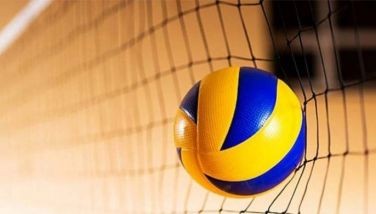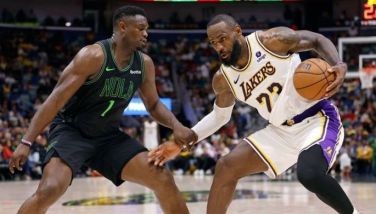Learning from Museum Olahraga

JAKARTA – In 1989, a three-storey museum was inaugurated in the Taman Mini park complex to celebrate the history of Indonesian sports and stood as a proud monument to glorify the country’s athletic heroes.
President Suharto’s wife Tien was chiefly responsible for sourcing the funds to construct the facility known as the Museum Olahraga (Bahasa for sports), about a 20-minute taxi ride from the heart of the city. Unfortunately, maintaining the museum in good order has been a problem with the government’s push for regional autonomy making it difficult to generate funds to support the upkeep.
A photo exhibit of the National Games, for instance, covers only 11 stagings from 1948 to 1985. There is no reference to the six National Games that preceded the 18th edition last July. As a “mock” consolation for trivia buffs, a “political” display was recently added to show pictures of Indonesian President Susilo Bambang Yudhoyono opening the 2008 Games and Vice President Yusuf Kalla in the closing rites. The recent National Games listed 43 sports in the calendar with 7,946 athletes from 33 provinces vying for 755 gold medals.
The Hall of Fame has only three enshrined athletes – sprinter Mohammed Sarengut who captured the gold medal in the 100 meters at the 1962 Asian Games, eight-time All-England badminton singles champion Rudi Hartono and Indonesia’s first world boxing titlist Ellyas Pical who reigned in the 1980s. Surely, some updating must be done, considering that Indonesia has produced six Olympic gold medalists since 1952.
A gallery of Indonesian sports officials shows vintage photographs of Suratin who founded the national soccer association in 1930, Akbar Tanjung who was Minister of Sports from 1988 to 1993 and Agung Laksono whose term was in 1998-99. Today, the Minister of Sports is Dr. Adhyaksa Dault, 45, who assumed the position four years ago but is absent from the gallery.
Large photographs of Indonesian athletes competing in sports like cycling, badminton, taekwondo and pencak silat to highlight popular motivational slogans like “No Pain, No Glory” are displayed on the first floor but they badly need touching up. There is a big photo of Pele giving his Santos of Brazil soccer uniform to Indonesian star Yacob Sibasale after a Jakarta exhibition match in 1978 but the specks of age are evident behind the glass display.
* * * *
While the effort to build a museum is commendable, the lack of will to keep it in tip-top shape is deplorable. The Museum Olahraga is sadly falling apart. Worse, it isn’t even tourist-friendly. The brochures are in Bahasa and the words explaining what’s on exhibit are also in Bahasa. Fortunately, I toured the museum in the company of boxing promoter Temuzin Rambing who took me around on businessman Tony Aldeguer’s request. Rambing translated what was on the brochure and displays.
Muhammad Riza Mahayaja, the museum section head for collection and documents, said there are plans for a total renovation which is long overdue. He said two months ago, the renovation started with the billiards room and the outside tennis court. Bur it will take time to fix up the museum itself and dust up the artefacts.
The first floor of the building features the Hall of Fame, the gallery of Indonesia’s sports officials, an exhibit of the 1997 Mount Everest conquest by intrepid adventurers Iwan Setiawan, Abmojiano and Misirin (their shoes and outfits are on display) and a photo tribute to Indonesian athletes in various sports promoting the values of Olympism, discipline, physical fitness, sound mind and sound body. A metal sculpture of three divers in different poses connected by suspension wires is at the open center of the museum strung up from the upper level to the ground floor.
* * * *
The second floor features individual exhibits of Indonesian achievements in various sports. For instance, 1970 Bangkok Asian Games middleweight boxing silver medalist Welhelem Gommeis’ gloves, robe and shoes are preserved. In the taekwondo section, on display is the men’s runner-up trophy at the 1992 Asian Championships. In tennis, Yayuk Basuki’s Prince racket and Adidas shoes are shown. In aquatics, the 1989 Swimmer of the Year plaque awarded to Asian Games and Southeast Asian Games medalist Elfira Rosa Nasution is exhibited. Also on display are the badminton rackets and shoes of 1996 Atlanta Olympic men’s doubles gold medalists Ricky Subagdja and Rexy Mainaky. Sports with individual displays include cycling, shooting, gymnastics, billiards, bowling, motor racing, bridge, chess, karate, field hockey, wresting, kempo, rowing, sepak takraw.
Also on the second floor are a photo exhibit of the National Games and a display of the traditional equipment in indigenous sports from different places like Bali, Sumatra, Maluku, Jogjakarta and Java.
On the third floor is a circular display of life-sized figures depicting action in traditional events like jumping stone in the Nias island, pasola where horseback riders battle it out with lancers in a simulation of actual combat and a race where each entry is a rider holding the reins of two cows.
A modest entry fee of 2,000 rupiah (about P10) is supposed to be paid but nobody collects. The museum’s hours are from 9 a.m. to 4 p.m.
Clearly, the museum attempts to portray sports as a source of national pride. The target audience is basically the local population. The concentration on indigenous sports is a reflection of the national spirit which the government hopes to instil in Indonesians. But it’s a myopic viewpoint to exclude foreign visitors who are interested to know about the history of Indonesian sports. Brochures and written explanations of the exhibits shouldn’t just be in Bahasa. Allocating a reasonable budget for maintenance and upgrading is also a necessity if the idea is to make the museum a hallmark of inspiration.
A visit to the Museum Olahraga should open up the eyes of Philippine sports officials to do something not just similar but much better. We can surely learn from the Indonesian example.
- Latest
- Trending
































